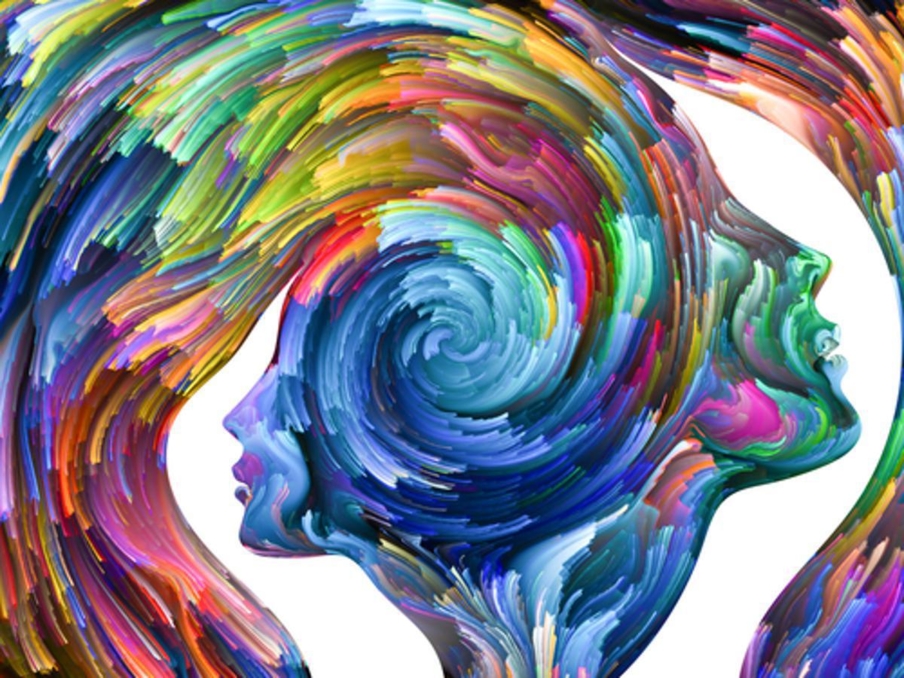Sensation modality - types and characteristics

And you, by chance, not synesthetic? Have you ever thought about such an amazing phenomenon as colour music? It turns out that there are people who not only hear the music, but also “see” it. Such people are called synesthetics. Synesthetics have amazing abilities. They can, for example, "see" the smell and "hear how it sounds."
Strictly speaking, each of us is a little bit synesthetic. To help "see" the music, its sounds are combined with color spots. It turns into light show or, more precisely, color music. The phenomenon in which the modality of sensations seems to be disturbed, because the signals of one modality (for example, sounds) cause sensations of another modality (for example, visual images), is called synesthesia. Remember, in one movie, the boy who decided to punish the orchestra musician who played the trumpet sat in the front row and began to eat a lemon? One glance at the lemon is enough for the mouth to taste sour, and salivation begins. And for someone it is enough to just say the word "lemon."
Synesthesia helps us feel that our sensations interact with each other in the most bizarre way. But in general, they are elementary processes of reflection of only certain properties of the surrounding world. Normally, each sensation reflects only the property that corresponds to its modality. We use 5 sensory-perceptual systems that are produced by our brain under the influence of certain stimuli:
• visual (color and light),
• auditory (sound)
• olfactory (smell)
• taste (taste),
• kinesthetic (touch).
Sometimes vestibular sensations are also mentioned (the result of vibration). But in ordinary consciousness, it is not the vibration that is called the “sixth sense”, but rather an intuition, which psychologists have not yet found a place for in the human perception system.
Elementary sensory processes (the so-called 5 sensations in psychology), as shown by synesthesia, cannot only interact and thus generate non-specific sensations, but they also can change their power.
If you sit long in front of a monitor or a book and feel that your eyesight is weakened, put something sweet or salty in your mouth, and immediately feel that your eyesight has improved. Such a change in the power of sensation of one modality (visual) under the influence of a stimulus or a signal of another modality (taste) received the term sensitization.
Have you ever wondered why in the halls of the philharmonic buildings, when performing musical works, they do not turn off the light, as they usually do in the opera house? Musicians note that, with bright light, the sound seems more saturated and powerful. The pastry chefs noticed that the green color destroys the taste of sweet in the mouth, and began to paint the green color of the plants where sweets are made. Restaurateurs know that red-brown colors stimulate appetite, and yellow, on the contrary, reduce it. Guess what color they prefer to paint the halls of restaurants? There is a use of sensitization.
How to study the modality in psychology
The modality of sensations in psychology has been studied for a long time. Actually the very first scientific experiments of W. Wundt, from which experimental psychology begins its history, are devoted precisely to the measurement of sensitivity.
The most important sensations in a person's life are visuals. Their meaning can be judged by the following fact. In order to earn the proud name “Hawkeye”, an Indian had to have a vision that would allow him to distinguish between two stars located in the middle of the handle of the Big Dipper. Acuity of vision depends on the magnitude of the angle between objects that a person is able to distinguish. The human eye is able to distinguish several hundred thousand colors and tones. And we are able to see the light of the candle 27 km away if the air is clear. And, nevertheless, the German physicist H. Helmholtz, who in the mid-19th century studied the structure of the human eye, expressed many complaints about the imperfection of this part of the body.
The next most important are auditory sensations, which perceive the pitch, timbre and loudness of sounds. The brain center separates sounds (an informative signal from the background noise), then detects repetitive elements and, at the end, identifies it.
Taste and olfactory sensations are still a psychological riddle. First, it is surprising how large the individual differences are in these areas. Perfumers are able to smell the composition of the fragrance. And many men, choosing perfumes for their beloved ladies, will agree that "confusing everyone here is not difficult: everything smells the same." Secondly, science cannot yet create artificial recognizers of smells and tastes. Tasters are not yet able to be replaced by any artificially created device.
Tactile sensations carry signals of a warm-cold type for a person, it hurts or it does not hurt, it is soft or hard. Different receptors are responsible for touch, pain and temperature sensations. And they are located in different parts of the body with varying degrees of frequency. Therefore, the back, for example, will feel cold faster than the stomach. Under the nose, the skin is more sensitive to pain than on the surface of the palm. And touching with your fingertips will tell you more about the surface of the object than if you touch it with your elbow.
How to measure sensitivity
Professionals are particularly sensitive to sounds, smells and color. Only a trained musician will be able to hear the singing out of tune of a musical work. The artist distinguishes color shades better than the amateur. Can these individual differences be measured?
Yes, and psychological research is aimed at measuring two types of sensitivity: absolute and differential.
Here is the easiest way to observe how people are distinguished by their hearing acuity. Put them close and ask to close their eyes. Then slowly approach them with a ticking clock or metronome. Whoever hears the sound first has absolute aural sensitivity. And whoever feels that the sound has become louder has higher auditory sensitivity. The pattern derived by the psychophysiologist S. Stephenson indicates that the weaker the signal that a person is able to perceive is, the higher his sensitivity to this kind of signals is. On the contrary, with low sensitivity, a person needs a signal of greater strength. That is why trained professionals are so good at differentiating sounds, smells and tastes - they are able to capture the most subtle shades and feel the slightest difference between signals of different strengths.
Why do we need adaptation
The human brain is flexible, and if a signal acts on the senses for quite a long time, then the sensation generated by this signal is gradually dulled and weakened. The adaptation mechanism works.
You enter a dark room and you see nothing at first. Gradually, the eyes adapt to the darkness, and objects become distinct outlines. When you return to a well-lit room, you will again need time to adapt, this time to the light.
Now imagine that you left your home for a while and then returned. You enter the familiar room and the first impression is the extraordinary sharpness of all the objects that are here. When you left, you did not experience this, but now you look around and wonder: everything seems to be the same, but in a different way. But after a while, everything returns to normal. Here again the adaptation mechanism worked, due to which the sensations seemed to be dulled, losing their sharpness and brightness.
Maybe this is why psychologists propose that spouses who have ceased to feel a sense of novelty towards each other should leave for a few days, so that when they meet, they will look at each other in a new way? To level the adaptation, which caused excitement from the aroma, image and touch of a loved one. Somehow, unnoticed, he or she became a familiar element of the home.
Although in the last example, adaptation does not serve very well, nevertheless, it is a very important biological mechanism. Man lives in a rapidly changing world and operates within a turbulent environment. Adaptation performs primarily an indicative function, helping to discard familiar signals and focus on new ones. Therefore, listening to music in the concert hall, you may well be distracted by your thoughts or the whisper of your neighbor, especially if the music does not capture you.
The other adaptation function, the defensive one, helps to adapt to strong stimuli and, eventually, stop noticing them. Such an adaptive mechanism reduces our energy costs.
Types of sensations vary in speed of onset of adaptation. Olfactory and tactile receptors adapt faster than visual and auditory sensations. Those who wear glasses and have the habit of moving them over their forehead, they know how easy it is to forget about them - the adaptation to a tactile stimulus comes quickly.
Is it possible to develop your sensitivity
Yes. Actually, this is happening with professionals who train their musical ear, or smell, or color discrimination. Sensitivity is workable. A trained person can distinguish up to 40 shades of black. This is what distinguished swatch dyer and they were very proud of it.
The different new sides of the world opening to a person can be the reward for the subtlety of sensations. Developing the ability to distinguish shades of colors or musical phrases of complex shape, a person develops his artistic abilities. Having learned to differentiate taste sensations, he is able to enjoy the finest flavors of coffee, or brandy, or wine, or a culinary masterpiece.
On the contrary, the absence of such taste sensitivity is replaced by the habit of obvious taste. And then for a person the most delicious thing is just what he is used to.











